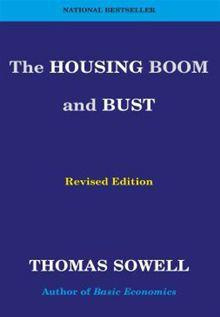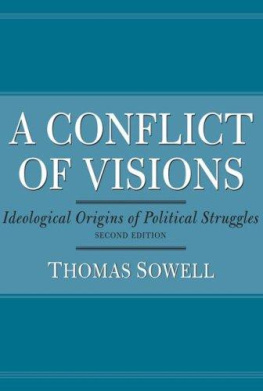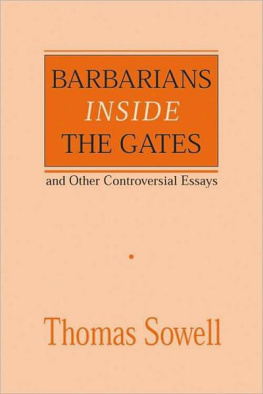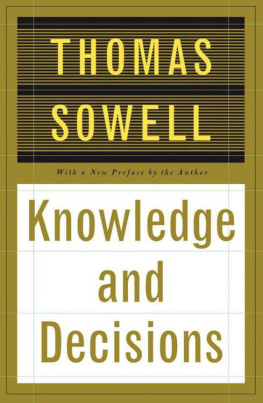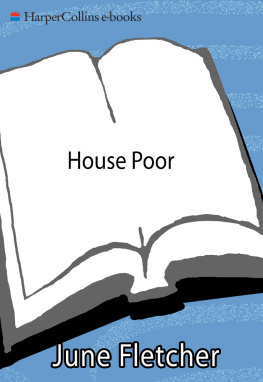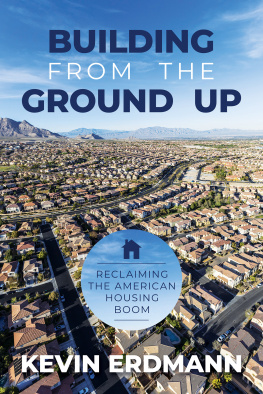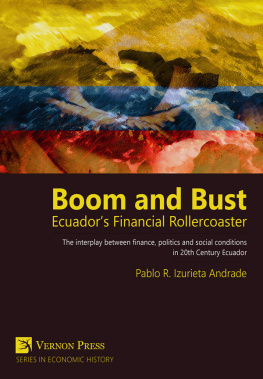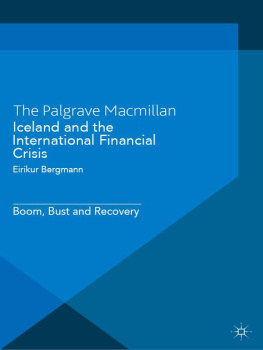Table of Contents
Preface to the Revised Edition
T wo financial writers for the New York Times summarized the current situation in housing and in the economy this way:
Real estate, which has traditionally brought the economy out of recession, seems increasingly likely this time to hold it back. The housing markets epic boom early this decade has turned into an epic bust whose effects may take years to shake off.
How we got into this predicament, and whether what is currently being done in Washington is likely to make things better or worse, is the subject of this book.
Usually a revised edition of a book is an occasion for correcting some of the things that were said in the first edition. In this case, however, both the analyses and the inferences in the first edition have since turned out to be painfully accurate, so this new edition will primarily update the economic situation, bringing out new facts that have become available since the first edition last year, and analyzing misguided new policies, promoted by politicians of both parties. Perhaps, instead of a revised edition, this might more aptly be called a reinforced edition.
The finger-pointing that almost invariably follows in the wake of any disastereconomic or otherwisehas generated much political rhetoric and spin, much of it repeated in the media and some of it in academia. What is crucial is to separate the facts from the rhetoric, so as to understand what got us where we are. Otherwise, we may needlessly extend or even repeat a national trauma that is hard enough to get through just one time.
How complicated is the problem? The economics of the housing boom and bust are pretty straightforward. The politics of it include a lot of misleading statements, but these can be broken down with the help of factsand the more facts we look at, the more the rhetoric clears away, like fog evaporating in the sunlight. We may sometimes become disgusted at what we learn when we look at facts, but at least we are no longer confused by political spin.
The great Supreme Court Justice Oliver Wendell Holmes deplored phrases that serve as an excuse for not thinking and said, think things not words. This book will look at things, and try to cut through the words that obscure them.
Thomas Sowell
Hoover Institution
Stanford University
Preface to the First Edition
S cary headlines and scarier statistics tell the story of a financial crisis on a scale not seen in decadescertainly not within the lifetime of most Americans. Moreover, this is a worldwide financial crisis. Financial institutions on both sides of the Atlantic have either collapsed or have been saved from collapse by government bailouts, as a result of buying securities based on American housing values that eroded or evaporated.
This financial tsunami has been followed by a political flood of rhetoric, accompanied by finger-pointing in all directions. Who was really responsible? What set this off?
There was no single, dramatic event that set this off, the way the assassination of the Archduke Ferdinand set off the chain of events that led to the First World War or the way the arrest of political operatives committing burglary at the Watergate Hotel led to the resignation of President Richard Nixon. A whole series of very questionable decisions by many people, in many places, over a period of years, built up the pressures that led to a sudden collapse of the housing market and of financial institutions that began to fall like dominoes as a result of investing in securities based on housing prices.
This book is designed to unravel the tangled threads of that story. It also attempts to determine whether what is being done to deal with the problem is more likely to make things better or worse.
Thomas Sowell
Hoover Institution
Stanford University
ACKNOWLEDGMENTS
As with many of my other books, this book owes much to my two dedicated research assistants, Na Liu and Elizabeth Costa. In addition to their ferreting out and sifting through vast amounts of reading material to find the things that were relevant to this study, Ms. Costa has done the copy-editing and fact-checking, while Ms. Liu has converted my ancient WordPerfect 5.1 word-processing files into the much more complex Quark files from which this book has been directly printed. I am grateful to them both and to the Hoover Institution, whose generosity has made possible the work that we all do. Thanks are also due to Dr. Gerald P. ODriscoll, a Senior Fellow at the Cato Institute, whose critique of a draft of this book clarified some issues for me and therefore ultimately for the reader. Helpful communications from scholars Peter J. Wallison and Alex J. Pollock of the American Enterprise Institute, and from Professor Lawrence J. White of New York University, clarified some of the puzzling history of securities-rating agencies and the Securities and Exchange Commissions regulation of those agencies, while Peter Schweizer of the Hoover Institution clarified some of the mysteries of federal regulations. Any interpretations or errors can only be my responsibility.
Chapter 1
The Economics of the Housing Boom
Staid was the last thing you could call mortgage lending during the housing boom. Frenzied might be a better term; and as the boom became a bubble, out of control would be even more appropriate.
F ew markets have had such a skyrocketing rise, followed immediately by an equally steep plummet to new depths, as the housing market has had in the early years of the twenty-first century. From 2000 to 2005, the median sales price of American single-family homes rose by more than 50 percent, from $143,600 to $219,600. In some places, the rise was even sharper. Over those same years, the median home price in New York rose 79 percent, in Los Angeles 110 percent and in San Diego 127 percent. In coastal California, the rise was especially sharpand so was the later fall.
Who or what caused the housing boom and bust?
There was no single cause of the housing crisis, and there is certainly plenty of blame to go around, especially among Washington politicians of both parties, who have been strenuously looking for villains outside of Washington. During the housing boom there were some voices of sanity that warned against the risky way things were being done, both in Washington and in Wall Street. However, during that boom, warnings were brushed aside with clever phrases or with pious statements about the benefits of increased home ownership.
When trying to get at the causes of any major social phenomenon, we are likely to find that these causes range across a wide spectrum. The causes of the housing boom and bust have been as general as the flaws and shortcomings of human beings and as specific as the effects of Federal Reserve System policy on interest rates or a change in mortgage loan eligibility standards by the Federal National Mortgage Association (Fannie Mae) or the Federal Home Loan Mortgage Corporation (Freddie Mac). The housing market is greatly affected by interest rates and credit eligibility rules, but there is much more to the story than that.
The record-breaking housing price rises that preceded the record-breaking housing market collapse were not evenly spread across the United States but were heavily concentrated in a relatively few places. Much confusion between local trends and national trends in housing markets contributed to counterproductive government policies. We need to understand what led to both kinds of home price trends during the boom before examining the causes and consequences of the housing bustand the repercussions that spread, not only across the nation but internationally.

